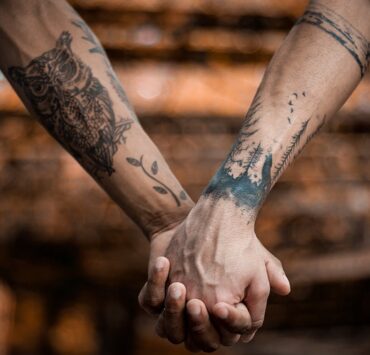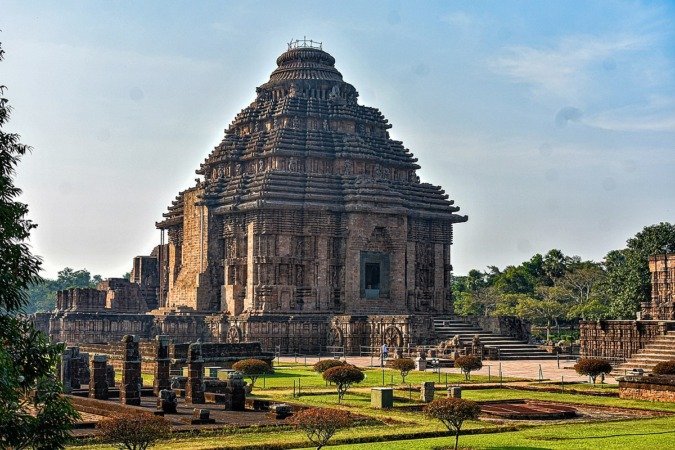
Konark Temple is one of the most marvelous seven wonders in India, built in a Kalinga-style pattern by King Narasimhadeva-1 of the Eastern Ganga Dynasty.
The temple is located 35km North-East of Puri City on the coastline in the state of Odisha.
The temple is dedicated to the Hindu Sun God Surya Dev. The word Konark comes from the Sanskrit combination of the words Kona(corner or angle) and Arka(the Sun). It is also called Arka Kshetra.
Now let’s see some fascinating facts about Konark Sun Temple.
Twelve Pairs of Wheels
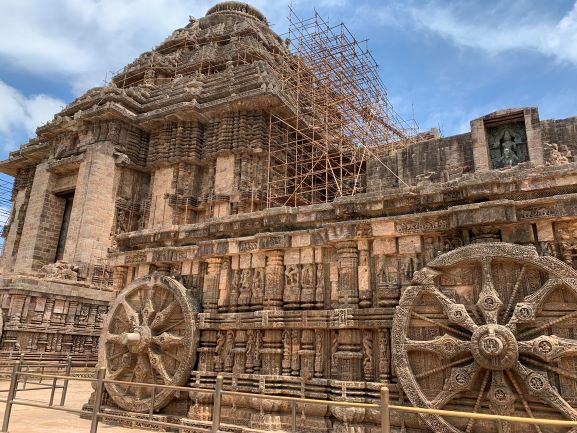
The Konark Temple is all about time. Every structure built in the temple represents the passage of time.
There are twelve pairs of stone-carved wheels at the base of the temple structure that represents the twelve months of the Hindu Calender. Each wheel of a pair defines the Sukla Paksha and Krishna Paksha.
There are a total of 8 spokes in a wheel which form the shape of a sundial. Each spoke represents a “Prahar” which is of 3 hours so 8 spokes represent 24 hours.
Seeing the shadow of the wheels one can exactly calculate the exact time of the day. Each wheel has a diameter of 9 feet and 9 inches.
Seven Horses
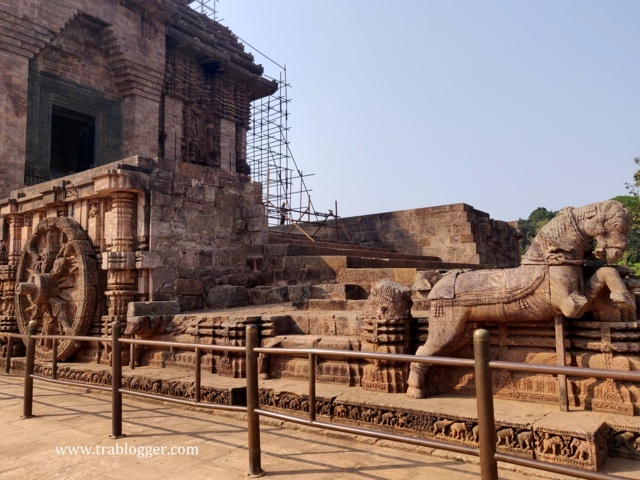
The temple is constructed in the form of a vast sun chariot drawn by seven horses representing the seven days of a week. The horses’ names are Gayatri, Brihati, Ushnih, Jagati, Trishtubha, Anushtubha, and Pankti.
Representation of Wealth and Power
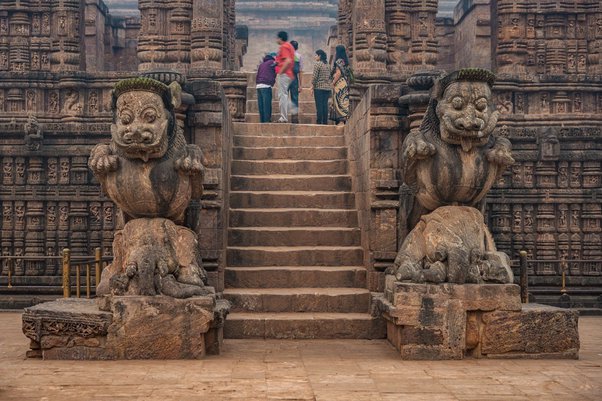
Right at the entrance of the Konark Sun Temple, one can find there are two lions on either side of the entrance which are seen crushing an elephant, and beneath the elephant is a human being. Here the lion and elephant sculpture represent power and wealth.
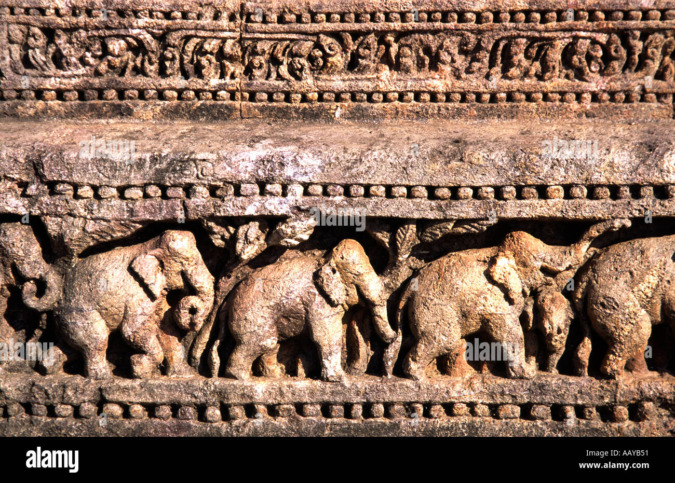
Hence it illustrates the major problems faced by humans in their lives are money and power only.
The Planning and Construction records are preserved
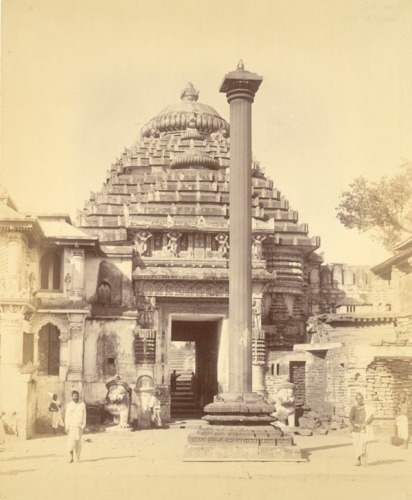
Konark Temple is one of the very few temples in India whose planning and construction records have been preserved. These records were written in the Sanskrit language in Odia script and have been preserved in the form of palm-leaf manuscripts. These records were discovered in a village in the 1960s and then subsequently translated.
Scriptures and Sculptures
The artwork done by carving the walls of the temple is so attractive and the sculptures built depict the four major pursuits of human life that is- the Kama, Artha, Dharma, and Moksha. The terrace has stone statues of male and female musicians playing various musical instruments such as Vina, Mardala, Gini, etc.
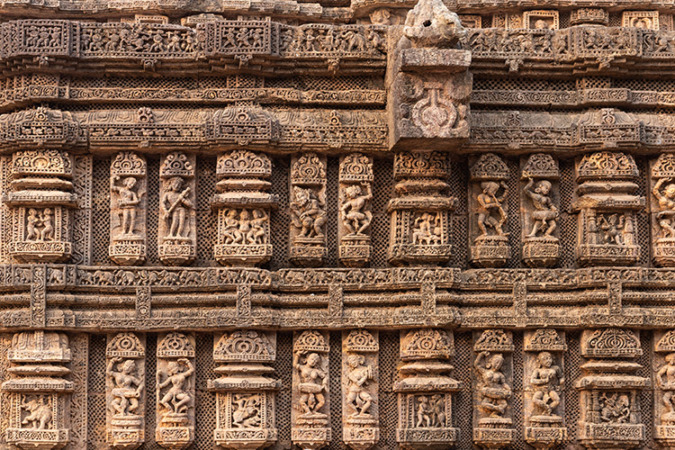
Other artworks include sculptures o Hindu deities, apsaras, various animals, aquatic creatures, birds, legendary creatures, and friezes narrating the Hindu texts.
Some panels have images showing the life of the king, such as one of the kings receiving counsel from a guru, where the artists portrayed the king as smaller than the guru, with his sword resting on the ground next to him.
The upana (molding) layer at the bottom of the platform contains friezes of elephants, marching soldiers, and musicians and there are several other images depicting the daily life of people such as hunting scenes, group of domestic animals, travelers preparing meals along the roadside, people carrying supplies on their heads, festive occasions.
On the other walls found images of girls drying their wet hair, looking from a window, playing with pets, a yogi during a standing asana, a mother blessing her son, comical characters, etc.
A major pillar dedicated to Aruna, the charioteer of the Sun God called Aruna Stambha was standing in front of the eastern stairs of the porch, later relocated to Singha-dwara of Jagannath Temple in Puri by a Maratha Brahmachari Goswami.
The pillar too was intricately carved with horizontal friezes and motifs.
Incredible View of the Temple during Dawn
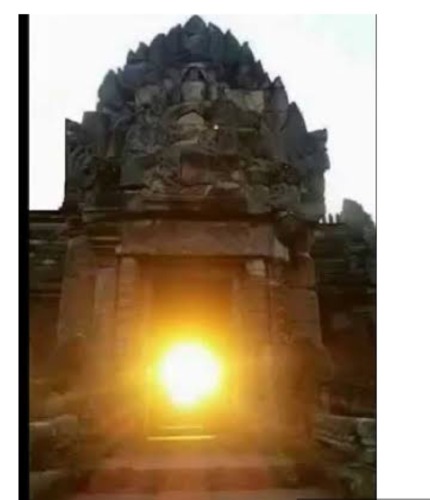

The temple is designed to face towards the eastern side so that the first rays of the sunrise strike the main entrance of the temple. When viewed from outside during early morning it seems like a huge chariot gradually emerging from the depths of the sea carrying the Sun God.
Black Pagoda
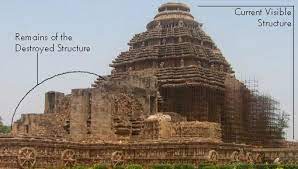

Due to the black color of the temple, it was also called a Black Pagoda by the European sailors. On the other hand, the Jagannath temple in Puri was called White Pagoda and both these temples formed important landmarks for sailors in the Bay of Bengal.
The stones used for the construction of this temple were bought from outside India via sea routes which prove that India used to have trade relations with other countries even at that time.
The Sun Temple was made by using three types of stones-
- Chlorite stones were used for the construction of door lintels, frames as well as some sculptures.
- Laterite stones were used for the core of the platform and staircases near the foundation.
- Khondalite stones were used for other parts of the temple.
Ruins of the Temple
Most parts of the temple structures are ruined. It is believed that the temple suffered severe damages due to natural disasters, Muslims destroyed the temple during their ruling period in India. During the colonial era, Britishers removed the magnets that were also used in temple construction to create magnetic stones.
A collection of fallen sculptures can be seen at the Konark Archaeological Museum maintained by the Archaeological Survey of India.
The upper portion of the temple which is destroyed is believed to have been studded with many inscriptions. The temple that exists today was restored due to the conservation efforts of the British-Indian era archaeological teams.
Do You Know?
– The temple in its present state is declared a World Heritage Site by UNESCO in 1984 CE. It is a pilgrimage place for Hindus who gather here every year during the Chandrabhaga Mela in February which also attracts many numbers of tourists.
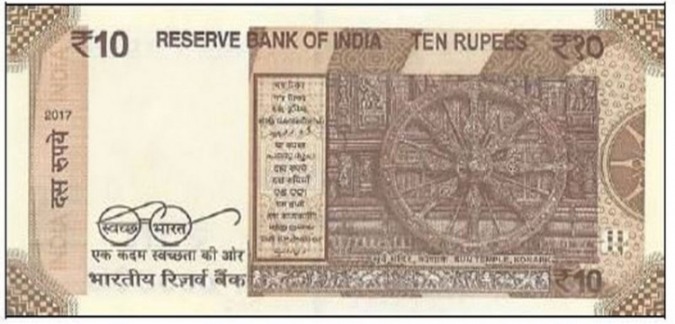

-The back of the Indian currency note of 10/- also represents the Konark Sun Temple to mark its importance to the Indian Culture.
What's Your Reaction?
An aspiring content writer, who loves to explore the culture and traditions of India.




